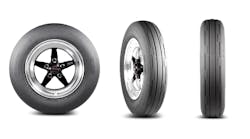This MTD exclusive was written by John Healy, a managing director and research analyst with Northcoast Research Holdings LLC, based in Cleveland, Ohio. Healy's Marketplace column appears each month in MTD.
Is demand for consumer tires on the upswing again? It appears so, based on feedback we’ve recently received from tire dealers.
Dealer commentary suggests that consumer demand was up versus levels seen during the month of August, when it took a slight dip. Tracking year-over-year, nearly 30% of respondents told us that they experienced a boost in demand. Our demand index climbed 11.4% in September versus the same month in 2019.
Our contacts have noted that selling calendars have been impacted by COVID-19, which has pushed back business into later months, creating a sense of optimism for the near-term as some consumers prepare to buy new tires in advance of winter’s arrival.
We continue to hold the perspective that long-term volumes will be more closely aligned with GDP growth. But we continue to caution that the months ahead could show mixed trends that parallel COVID-19 infection rates and other factors.
Tier two holds firm
How are tiers trending? Our latest survey indicates that tier two is experiencing the most growth, which is a continuation of the trend that we observed in the month of August.
This is relatively unsurprising, as the recent spike in COVID-19 infections in certain parts of the country and other factors have perpetuated an atmosphere of uncertainty that will most likely linger.
We also note this is the first time we have seen a month-to-month consistency in tier rankings since the start of the pandemic, when we noted that tier three brands seemed to be the most preferred selection.
It appears that many consumers have begun to settle on looking for both value and performance in their tires, with a lean towards value. Looking past this, we, believe that a continued lifting of travel restrictions and more news about a possible COVID-19 vaccine in the coming months will lead to a more confident consumer, who is more willing to opt for tier one and tier two brands.
Renewed optimism
Although tire industry profit levels are often a function of numerous factors - including raw material cost inflation, weather patterns and competitive dynamics like supply/demand balances and plant capacity additions, we want to reinforce our view that the market continues to gain strength and the outlook for tire dealers and wholesalers remains healthy.
In fact, we note the majority of individuals who make up the dealer community with whom we have spoken recently have an upbeat outlook for volume trends, driven by several factors, including a continued upward trajectory in miles driven.
September saw an average miles driven decline of 5.9%, which is lower than in previous months. And Apple’s Mobility Trends Report shows that the number of people who are searching the internet for driving directions were up 32% as of Oct. 10.
The fact that consumers are acting in a more “frugal” manner and are operating older vehicles, thus creating more demand for maintenance, is contributing to dealer optimism.
And the potential for favorable weather conditions, another potential round of stimulus checks and other developments to assist consumer and general economic recovery bode well.
As a result, we expect that sell-out trends during the fourth quarter of 2020 will not lose positive momentum.
Raw material recap
We continue to note that while cost pressures in raw materials remain, some are continuing to ease upward.
Raw material prices during the third quarter are expected to decline 11.1% versus the third quarter of 2019. As noted in last month’s column, carbon black prices continue to experience a reduction in cost pressure on a year-over-year basis.
Crude oil prices continue to be down 44%, on average, year-over-year. (In August alone, crude oil prices dropped 23.5% versus the same month in 2019.)
Synthetic rubber costs have remained negative for 17 straight months year-over-year and reinforcement items continue to track negative.



